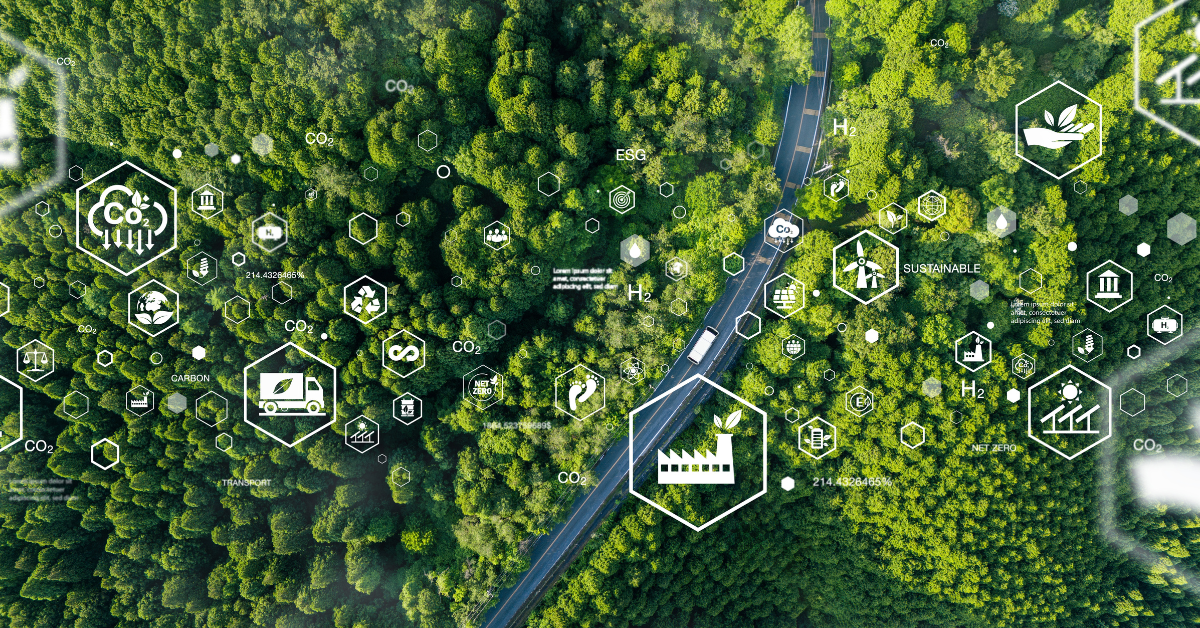
Discover what carbon emission reporting is, why it matters, and how your business can effectively create one to enhance transparency, sustainability.
Carbon emission reporting is the structured process by which organizations quantify, document, and disclose their greenhouse gas (GHG) emissions.
Being a key element in the global effort to mitigate climate change, this practice provides a transparent account of an enterprise’s environmental impact, enabling stakeholders to assess and compare performance across industries.
Key Components of a Carbon Emission Report
A comprehensive carbon emission report typically encompasses the following elements:
- Emission Scopes: Categorization of emissions into Scope 1 (direct emissions from owned or controlled sources), Scope 2 (indirect emissions from the generation of purchased energy), and Scope 3 (all other indirect emissions that occur in the value chain);
- Data Collection Methodology: Detailed explanation of the data sources, calculation methods, standards and assumptions used in quantifying emissions;
- Emission Factors: Standardized coefficients that convert activity data into GHG emissions, ensuring consistency and comparability;
- Baseline and Reporting Periods: Establishment of a reference year against which future emissions are compared, along with the specific time frame covered by the report;
- Reduction Targets and Strategies: Definition of short-term and long-term goals for emission reductions, accompanied by the initiatives planned or undertaken to achieve them;
- Verification and Assurance: Engagement of third-party auditors to validate the accuracy and completeness of the reported data, enhancing credibility.
How to Create a Carbon Emission Report
Crafting a carbon emission report demands a rigorous and methodical approach, grounded in the accurate definition of organizational activities, the careful quantification of emissions, and the transparent communication of results.
It also increasingly relies on the integration of advanced digital solutions to manage the complexity of data and the dynamic nature of environmental standards.
Yet, despite the growing availability of technological support, organizations must navigate persistent challenges related to data quality, resource allocation, and evolving expectations, underscoring the importance of a structured, forward-looking approach to emission reporting.
Step-by-Step Guide to Carbon Emission Reporting
- Define Organizational Boundaries: Determine the operational and organizational boundaries for reporting, deciding whether to use a control or equity share approach;
- Identify Emission Sources: Identify all relevant emission sources within the defined boundaries, including stationary combustion, mobile combustion, process emissions, and fugitive emissions;
- Collect Activity Data: Gather quantitative data on activities that result in GHG emissions, such as fuel consumption, electricity usage, and production volumes;
- Apply Emission Factors: Utilize appropriate emission factors to convert activity data into GHG emissions, ensuring alignment with recognized standards;
- Calculate Emissions: Compute total emissions for each source and aggregate them by scope and gas type;
- Set Reduction Targets: Establish measurable and time-bound emission reduction goals, informed by the calculated emissions profile;
- Develop Mitigation Strategies: Identify and implement initiatives aimed at reducing emissions, such as energy efficiency improvements, renewable energy adoption, and process optimization;
- Document and Report: Compile the findings into a structured report, adhering to the chosen reporting framework and ensuring transparency and clarity;
- Seek Verification: Engage independent third parties to audit and verify the reported data, enhancing the report's credibility;
- Communicate Results: Disseminate the report to stakeholders, including investors, customers, employees, and regulators, fostering transparency and accountability.
Tools and Software for Efficient Reporting
Advancements in technology have led to the development of various tools and software solutions that streamline carbon emission reporting.
The perk of such platforms lays in the simplification of activities related to data collection, calculation, and reporting, often integrating with existing enterprise systems.
Notable examples include:
- Microsoft Sustainability Cloud: Provides tools for tracking and managing environmental data, supporting sustainability initiatives.
- Salesforce Net Zero Cloud: Enables organizations to monitor and reduce their carbon footprint through integrated analytics and reporting features.
- IBM Environmental Intelligence Suite: Combines AI and weather data to assess environmental risks and support sustainability planning.
Common Challenges in Carbon Emission Reporting
Organizations often encounter several obstacles in the carbon emission reporting process, including:
- Data Availability and Quality: Inconsistent or incomplete data can hinder accurate emissions calculations, particularly for Scope 3 emissions involving supply chain activities;
- Complexity of Emission Sources: Diverse and dispersed operations may complicate the identification and quantification of all relevant emission sources;
- Evolving Regulatory Landscape: Keeping abreast of changing reporting requirements and standards across jurisdictions can be challenging;
- Resource Constraints: Limited financial and human resources may impede the development and implementation of comprehensive reporting systems;
- Lack of Standardization: Variations in reporting methodologies and frameworks can lead to inconsistencies and reduce comparability across organizations.
Regulatory Frameworks and Standards
Global Standards for Carbon Reporting
To ensure consistency and comparability in carbon emission reporting, several international standards have been established.
In this context, the Greenhouse Gas (GHG) Protocol is one of the most widely adopted frameworks, providing comprehensive guidelines for measuring and managing GHG emissions and categorizing emissions into three scopes: direct emissions (Scope 1), indirect emissions from purchased energy (Scope 2), and other indirect emissions in the value chain (Scope 3).
Complementing the GHG Protocol, the ISO 14064 series offers a set of standards for quantifying, monitoring, reporting, and verifying GHG emissions.
Particularly, ISO 14064-1:2018 specifies requirements at the organizational level for GHG inventory development and reporting.
Mandatory Reporting Regulations by Region
Globally, numerous countries have instituted mandatory carbon emission reporting requirements.
In the United States, the Environmental Protection Agency's Greenhouse Gas Reporting Program mandates that major facilities of carbon intensive sectors report their emissions annually, covering large GHG emission sources and fuel suppliers. Similarly, California's Global Warming Solutions Act requires major sources to report their GHG emissions.
In the European Union, the Corporate Sustainability Reporting Directive (CSRD), although postponed due to the Omnibus Directive, has expanded the scope of mandatory reporting, requiring large companies to disclose detailed information on sustainability-related risks and opportunities.
Voluntary Reporting Initiatives
Beyond mandatory requirements, several voluntary initiatives encourage organizations to disclose their carbon emissions.
The EFRAG VSME standard, for instance, requires companies to disclose scope 1 and scope 2 emissions and provides the basis also for scope 3 accounting and reporting.
The Carbon Disclosure Project (CDP) is another prominent example, where companies voluntarily report their environmental impact, with over 22,700 organizations disclosing information through CDP in 2024.
Moving to carbon credits accounting, the Voluntary Carbon Markets Integrity Initiative (VCMI) provides guidance for companies on the credible use of carbon credits as part of their climate commitments, ensuring transparency and consistency in voluntary carbon markets.
Benefits of Carbon Emission Reporting for Businesses
Enhancing Corporate Transparency and Accountability
Engaging in carbon emission reporting demonstrates a company's commitment to environmental responsibility, enhancing transparency and accountability.
By disclosing emissions data, organizations can build trust with stakeholders, including investors, customers, and regulators leading to improved brand reputation and stakeholder confidence.
Identifying Opportunities for Emission Reduction
Through detailed emissions reporting, businesses can identify inefficiencies and areas for improvement within their operations.
This insight enables the development of targeted strategies to reduce emissions, such as optimizing energy use or transitioning to renewable energy sources, leading to cost savings and enhanced operational efficiency.
Gaining Competitive Advantage in the Market
Proactive carbon emission reporting can provide a competitive edge in the marketplace.
Companies that transparently disclose and actively work to reduce their emissions are often viewed favourably by consumers and investors leading to increased market share, access to new investment opportunities, and alignment with emerging regulatory requirements.
Future Trends in Carbon Emission Reporting
Innovations in Carbon Accounting Technologies
The landscape of carbon emission reporting is rapidly evolving, driven by technological advancements that enhance the accuracy and efficiency of emissions tracking.
Modern carbon accounting tools now offer real-time data integration and sensors for emission tracking, enabling organizations to monitor their emissions continuously.
These tools often incorporate advanced analytics, providing deeper insights into emission sources and facilitating more effective reduction strategies.
The Increasing Role of AI in Data Analysis
Artificial Intelligence (AI) is playing an increasingly significant role in analyzing complex emissions data.
AI-driven tools can process large datasets to identify patterns, predict future emissions trends, and recommend mitigation strategies, enhancing decision-making processes and supporting the development of more effective sustainability initiatives.
Moreover, AI can assist in automating the reporting process, reducing the potential for human error and ensuring compliance with various reporting standards.
Evolving Regulations and Their Impact on Reporting
As global awareness of climate change intensifies, regulatory frameworks governing carbon emission reporting are becoming more stringent.
In this context, companies must stay abreast of evolving regulations to ensure compliance and avoid potential penalties.
Organizations are increasingly expected to provide transparent and comprehensive emissions data, not only to meet legal obligations but also to satisfy stakeholder demands for environmental accountability.



